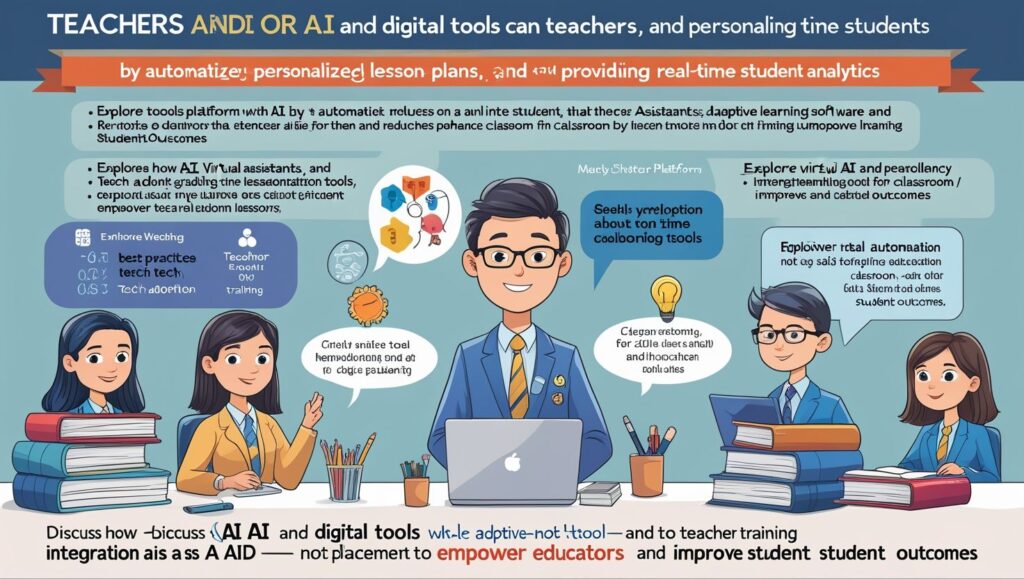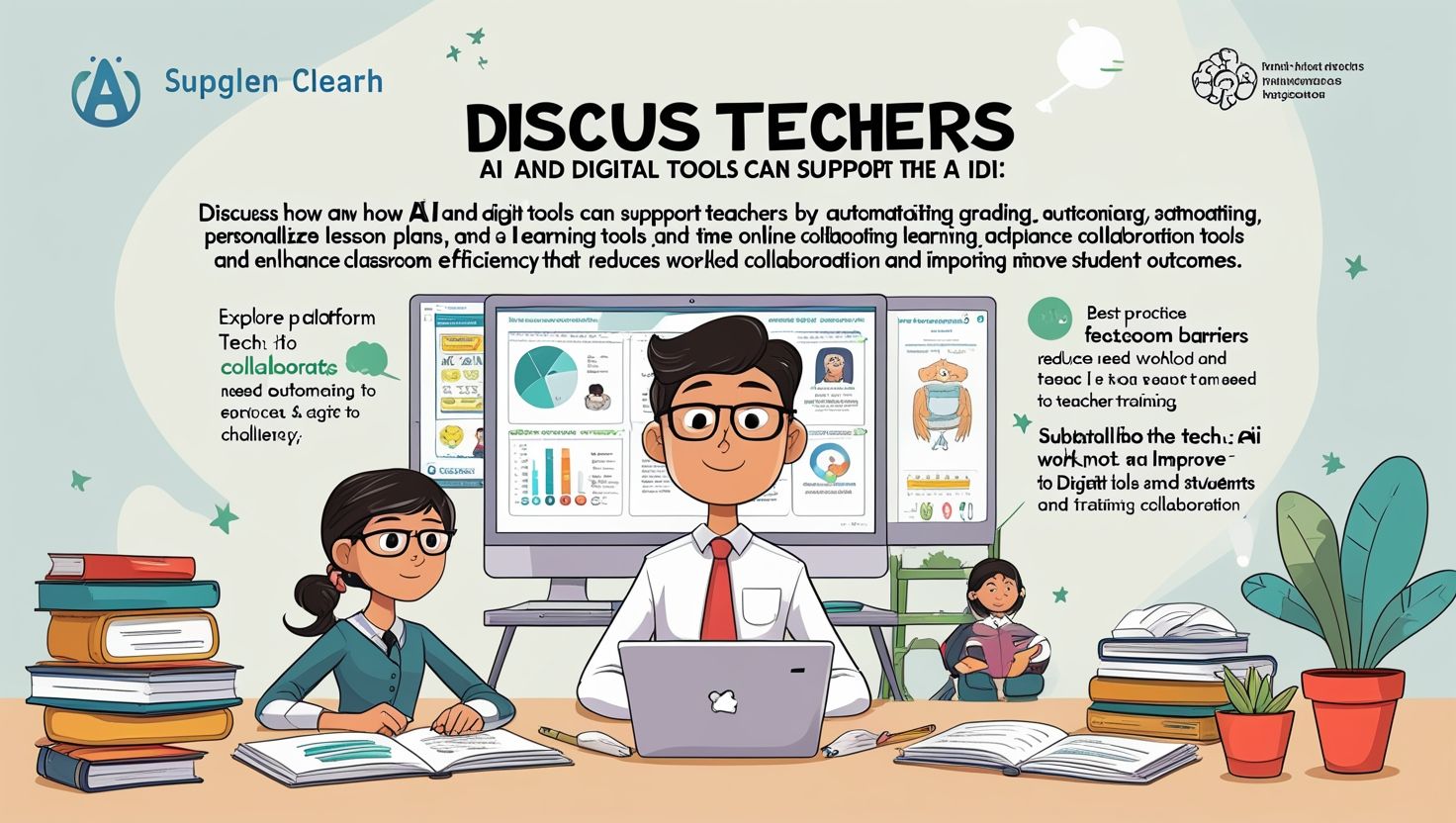1. Introduction to Support Teachers
Support Teachers Guide, Support teachers, often referred to as special educators, instructional aides, or learning support staff, are vital professionals who assist students with diverse educational needs in mainstream and inclusive classrooms. Their primary goal is to ensure that every student has access to quality education, regardless of learning differences or challenges. Support teachers work collaboratively with classroom teachers to design and implement instructional strategies tailored to the individual needs of learners. These educators cater to students with physical disabilities, learning disorders, behavioral challenges, and emotional difficulties, providing them with the assistance necessary to thrive academically and socially.
In an age where inclusive education is a global priority, the role of support teachers becomes more crucial than ever. They are instrumental in bridging gaps between standardized instruction and differentiated learning. By offering tailored interventions, progress monitoring, and advocacy, support teachers act as a lifeline for many struggling students. Additionally, they help reduce the burden on general educators by co-planning and co-teaching lessons. With their expertise in assessment, behavior management, and personalized learning plans, support teachers play a foundational role in fostering an inclusive and equitable educational environment.
2. Roles and Responsibilities of Support Teachers
The roles and responsibilities of support teachers are dynamic and multifaceted, encompassing instructional, emotional, and administrative tasks. Their primary function is to provide targeted educational support to students with additional learning needs, often through small group sessions, one-on-one tutoring, or in-class assistance. They modify lesson content, adapt teaching methods, and offer alternative assessment formats to match the individual learning styles and capabilities of students. These tailored approaches ensure students remain actively engaged and progress academically alongside their peers.
Beyond instruction, support teachers are responsible for creating and managing Individualized Education Programs (IEPs), coordinating with specialists like speech therapists and counselors, and maintaining detailed records of student progress. They must communicate regularly with parents and guardians to provide updates and involve families in the learning process. Moreover, support teachers often assist in classroom behavior management, social skills development, and self-regulation strategies for students with behavioral or emotional challenges.
Collaboration is central to their role. They work closely with general education teachers to co-plan lessons, share resources, and provide professional insights on inclusive practices. Their role is not just supportive—it is essential for the successful implementation of inclusive education in today’s diverse classrooms.

3. Importance of Support Teachers in Inclusive Education
Inclusive education emphasizes the right of every child, regardless of ability, to access quality education within mainstream classrooms. In this paradigm, support teachers are indispensable. They ensure that students with extra needs, learning disabilities, or socio-emotional challenges are not left behind. By addressing diverse educational requirements through personalized support, these educators promote equity, accessibility, and inclusivity.
Support teachers foster a learning environment where differences are respected and embraced. They help reduce stigma and build peer acceptance through structured integration strategies. Their interventions help create classrooms where every student can participate meaningfully. In doing so, they not only uplift the learners they directly support but also contribute to a broader culture of empathy and collaboration.
Moreover, support teachers facilitate academic parity by ensuring that instructional materials, assessments, and classroom activities are modified as needed. They work to level the playing field, making sure that students who might otherwise be marginalized receive the same opportunities to learn and grow. Their involvement enhances school-wide outcomes by reducing dropout rates, improving academic performance, and supporting the mental well-being of vulnerable students.
4. Collaboration Between Support Teachers and Classroom Teachers
Effective collaboration between support teachers and classroom teachers is the cornerstone of successful inclusive education. Both educators bring unique perspectives and expertise that, when combined, result in enriched teaching and learning experiences. Classroom teachers provide subject-matter expertise and knowledge of curriculum standards, while support teachers bring specialized strategies for differentiation and accommodations.
Co-planning lessons is a critical area of collaboration. Together, they design lessons that are inclusive from the outset—incorporating visual aids, hands-on activities, and differentiated tasks to meet varied learning needs. Co-teaching models such as team teaching, parallel teaching, and station teaching allow both educators to share responsibilities and optimize student engagement. Regular communication ensures consistency in behavior expectations, instructional goals, and assessment criteria.
Collaborative relationships extend beyond planning and instruction. Support teachers often train or mentor classroom teachers in managing different needs, using assistive technology, and recognizing early signs of learning difficulties. This professional exchange fosters mutual respect and professional development. Ultimately, when support and classroom teachers work in unison, they create a synergistic environment where all students benefit—not just those with additional learning needs.
5. Strategies and Techniques Used by Support Teachers
Support teachers employ a wide array of strategies and techniques to meet the individual needs of students. One of the most commonly used approaches is differentiated instruction, where lessons are tailored based on student readiness, interests, and learning profiles. This may involve modifying content, process, or product to ensure access and engagement for all learners.
Another key strategy is scaffolding—breaking learning tasks into smaller, manageable parts and gradually removing support as students gain independence. Support teachers may use graphic organizers, step-by-step checklists, and visual aids to help students understand complex concepts. They also incorporate multisensory learning techniques, such as combining visual, auditory, and kinesthetic inputs to reinforce learning.
Assistive technologies like text-to-speech tools, audiobooks, and interactive software are increasingly part of the support teacher’s toolkit. These resources make learning more accessible for students with disabilities. Positive behavior support strategies, including token systems and social stories, help manage behavior and improve student self-regulation.
Additionally, support teachers often implement remedial and enrichment programs to reinforce foundational skills or accelerate advanced learners. By continuously adapting and evolving their methods, support teachers ensure that no student is left behind in the educational process.

6. Training and Professional Development for Support Teachers
Ongoing training and professional development are vital for support teachers to stay current with best practices in special education and inclusive teaching. Due to the dynamic nature of educational needs, especially those associated with learning and developmental disabilities, professional learning must be continuous, practical, and research-informed.
Support teachers benefit from specialized training in areas such as differentiated instruction, behavior intervention planning, use of assistive technologies, and development of IEPs. Workshops and certifications on specific conditions like autism spectrum disorders, dyslexia, ADHD, and emotional disorders help them better understand and support their students. They also require training in legal and ethical frameworks that govern inclusive education.
Professional development often includes collaborative learning opportunities, such as professional learning communities (PLCs), peer observations, and co-teaching practice sharing. These experiences foster reflective practice and shared problem-solving among educators.
Furthermore, training in soft skills like communication, empathy, and conflict resolution enhances a support teacher’s ability to work effectively with students, families, and colleagues. Investing in the professional growth of support teachers is crucial not only for their own success but also for improving the overall quality and equity of education systems.
7. Challenges Faced by Support Teachers
Despite their vital role, support teachers face numerous challenges that can hinder their effectiveness. One of the primary issues is workload. With a growing number of students requiring additional support and often limited staffing, support teachers may find themselves stretched thin. They are expected to juggle lesson planning, student interventions, assessments, and administrative tasks, often with insufficient time or resources.
Another significant challenge is lack of recognition and professional identity. In some educational settings, support teachers are viewed as auxiliary rather than essential, leading to marginalization within the school community. This can impact morale and limit their influence on instructional decisions.
Collaborative issues may also arise when general educators are unfamiliar with inclusive practices or resistant to change. In such cases, support teachers may struggle to implement effective co-teaching models or accommodations. Limited access to professional development opportunities and inadequate training in specialized tools or strategies can also impede their growth.
Additionally, emotional burnout is a risk due to the demanding nature of the job. Supporting students with complex needs requires patience, resilience, and compassion—qualities that can be difficult to sustain without institutional backing and self-care strategies.
8. Support Systems and Resources for Support Teachers
To empower support teachers and enable them to perform their roles effectively, robust support systems and resources are essential. Institutional backing should include adequate staffing, access to teaching materials, assistive technology, and designated spaces for one-on-one instruction. Educational leaders must ensure that support teachers are integrated into school planning, policy development, and decision-making.
Mentorship programs can provide newly appointed support teachers with guidance, feedback, and professional growth. Regular collaboration meetings with classroom teachers and specialists also help align instructional goals and share effective practices. Access to student performance data and progress tracking tools is critical for informed decision-making and targeted intervention.
Online platforms and resource banks offer practical tools, lesson plans, and instructional videos tailored to special education. Membership in professional organizations, such as the Council for Exceptional Children (CEC) or National Association of Special Education Teachers (NASET), connects support teachers with peer networks and ongoing training opportunities.
Mental health and well-being services should also be accessible to support teachers, given the emotional toll of their work. When institutions invest in the tools, training, and recognition support teachers need, the outcomes for both teachers and students are profoundly positive.

9. Impact of Support Teachers on Student Achievement
Support teachers significantly impact student achievement, particularly for those with learning challenges or disabilities. By offering personalized attention, differentiated strategies, and consistent monitoring, they help students overcome barriers that hinder academic progress. Research consistently shows that students who receive targeted support from trained professionals demonstrate improved performance in reading, writing, and mathematics.
Support teachers also contribute to building students’ self-confidence and motivation. Through encouragement and scaffolded learning experiences, students gain a sense of accomplishment and develop a more positive attitude toward school. This, in turn, leads to higher attendance rates and reduced dropout risks.
In inclusive settings, support teachers promote cooperative learning and peer engagement, helping students develop social and communication skills. These improvements extend beyond the classroom, positively influencing students’ long-term educational and career trajectories.
Moreover, the ripple effects of support teachers’ work benefit the whole classroom. By easing the burden on general educators and ensuring all students remain engaged, they contribute to a more productive and harmonious learning environment. Ultimately, the presence of support teachers transforms educational spaces into inclusive ecosystems where every learner can thrive.
10. Conclusion
The significance of support teachers in modern education cannot be overstated. As schools worldwide strive to become more inclusive, the need for skilled, empathetic, and well-supported educators who can meet diverse student needs becomes paramount. Support teachers not only enhance the academic performance of students with another needs but also enrich the educational experiences of all learners by fostering inclusive and supportive environments.
Going forward, the future of support teaching will likely involve increased use of technology, greater integration of mental health support, and expanded collaboration with families and communities. Education systems must respond by offering more comprehensive training programs, better compensation, and stronger policy frameworks that recognize the essential nature of this profession.
Investing in support teachers is an investment in equitable education. As we envision classrooms that are accessible, engaging, and empowering for every student, support teachers will remain the foundation of that vision—champions of diversity, inclusion, and lifelong learning.


Başakşehir su kaçağı tespiti Tespit için gelişmiş ekipman kullanmaları etkileyiciydi. https://bexopro.com/read-blog/21476
Somebody essentially help to make seriously articles I would state. This is the very first time I frequented your website page and thus far? I amazed with the research you made to make this particular publish incredible. Excellent job!
I am not very excellent with English but I get hold this very easy to interpret.
We are a group of volunteers and opening a new scheme in our community. Your site offered us with valuable information to work on. You have done an impressive job and our whole community will be grateful to you.
of course like your web site however you need to test the spelling on quite a few of your posts. Many of them are rife with spelling issues and I find it very troublesome to tell the reality on the other hand I will definitely come again again.